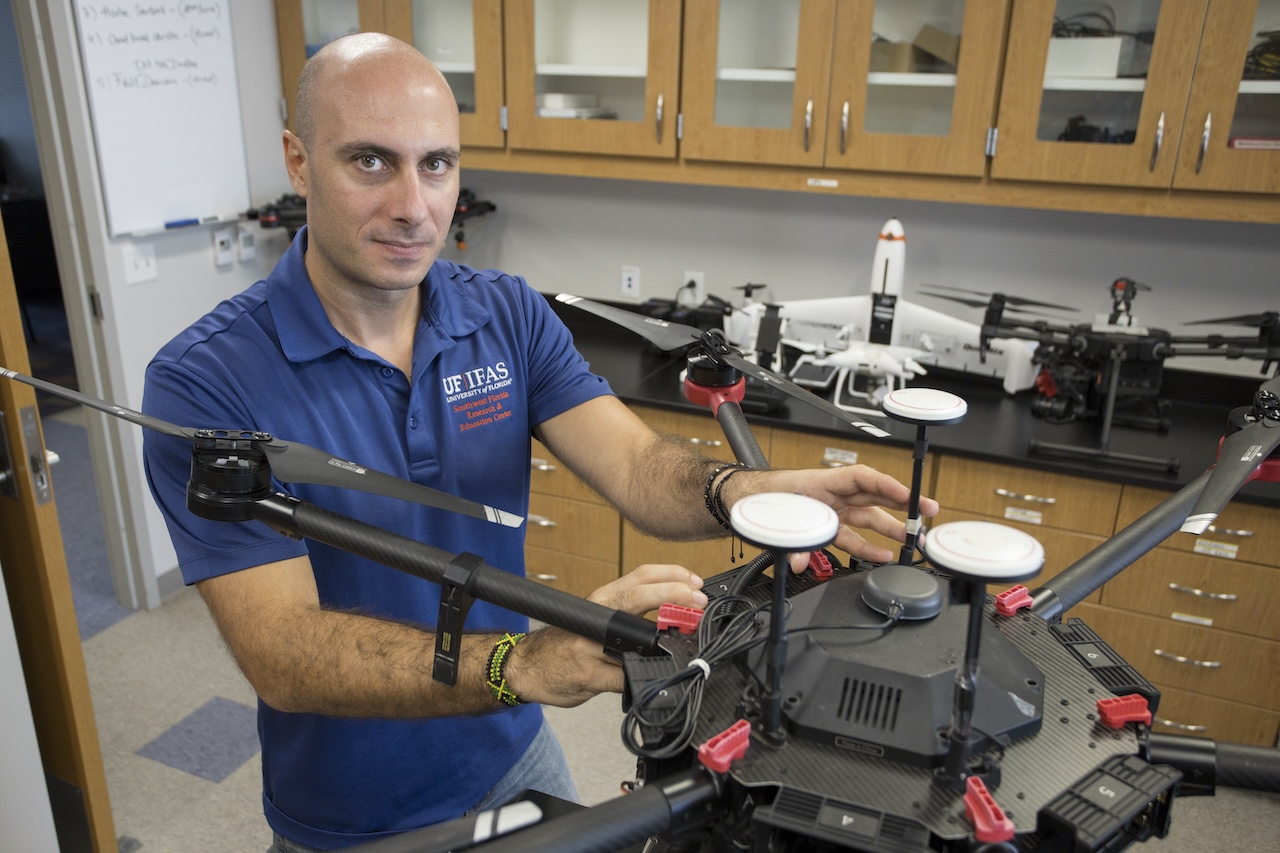From problem to on-farm solution: The journey of one UF/IFAS AI technology
A few weeks after Yiannis Ampatzidis started working at the University of Florida in 2017, Hurricane Irma wreaked havoc on the Florida peninsula and its citrus groves. Growers needed to count their trees with precision to get crop insurance, but it was a laborious, time-intensive task.
The storm served as a turning point for him, as it highlighted the urgent need to find innovative solutions to address challenges in agriculture -- for pests, diseases and insurance.
“Tree-crop growers came to me with a clear need: a faster, more accurate and cost-effective way to create tree inventories,” said Ampatzidis, a UF/IFAS associate professor of agricultural and biological engineering at the Southwest Florida Research and Education Center.
Not only is manually counting trees expensive, it’s error prone. One grower told him it took him 14 months and two full-time employees to complete a tree inventory.
In addition to storm damage, citrus greening creates gaps in groves because growers remove dead trees, Ampatizids said. The disease and its consequences amplified the need for faster, more accurate tree counts.
The tree inventory inefficiency led Ampatzidis and his lab to develop Agroview, artificial intelligence-based technology that was named a UF Innovation of the Year award winner in 2020.
It’s an example of how scientists listen to the needs of growers and bring AI technology directly to farms to solve problems.
“This approach was transformative. It reduced data collection time by up to 90% and significantly cut costs, offering growers a more efficient and accurate alternative to manual counting.” —Yiannis Ampatzidis, a UF/IFAS associate professor of agricultural and biological engineering at the Southwest Florida Research and Education Center.
A new way to count trees
In 2018, Ampatzidis and Victor Partel, then a research assistant in his lab, began developing the cloud-based technology. They initially used drone imagery to create tree inventories. This required combining field research, AI model development and software engineering.
In the field, they collected high-resolution drone images of tree crops, which they analyzed, using novel, AI algorithms to measure tree characteristics.
“This approach was transformative,” Ampatzidis said. “It reduced data collection time by up to 90% and significantly cut costs, offering growers a more efficient and accurate alternative to manual counting.”
Once the prototype was functional, UF/IFAS researchers worked with growers to test it rigorously.

“Their feedback was invaluable in refining the technology, ensuring it met real-world needs,” Ampatzidis said.
Over time, Agroview evolved beyond tree inventories.
With contributions from research assistants Lucas Costa and Christian Lacerda, Ampatzidis integrated aerial, multispectral imaging and AI algorithms to create fertility and nutrient application maps, enabling precision agriculture practices and optimizing fertilization and harvesting logistics. Scientists also developed yield-prediction models and a technique to enhance images from airplanes and satellites.
Today, Agroview has come full circle. The reason it came about was to count citrus trees after a hurricane.
One of its most impactful applications is performing rapid damage assessments following extreme weather events like hurricanes, Ampatzidis said.
Two crop insurance companies utilize Agroview for inspections, including counting trees, Ampatzidis said. “Agroview has streamlined this process, providing a faster and more precise alternative.
"Additionally, several growers are exploring the use of Agroview for precision crop management, leveraging its capabilities to optimize nutrient application, assess field health and improve overall productivity,” he said.
For example, one grower utilized Agroview to rapidly create tree inventory maps and count gaps in a 2,000-acre orchard, allowing him to efficiently order and plant new trees.
“The development of Agroview illustrates the journey from identifying a problem to delivering a commercial AI solution,” Ampatzidis said. “What began as a response to manual inefficiencies has grown into a versatile tool that leverages cutting-edge AI to transform agriculture. By addressing critical needs, Agroview has not only enhanced agricultural practices but also demonstrated the power of AI to solve real-world problems, a testament to the innovative work happening at UF/IFAS.”
